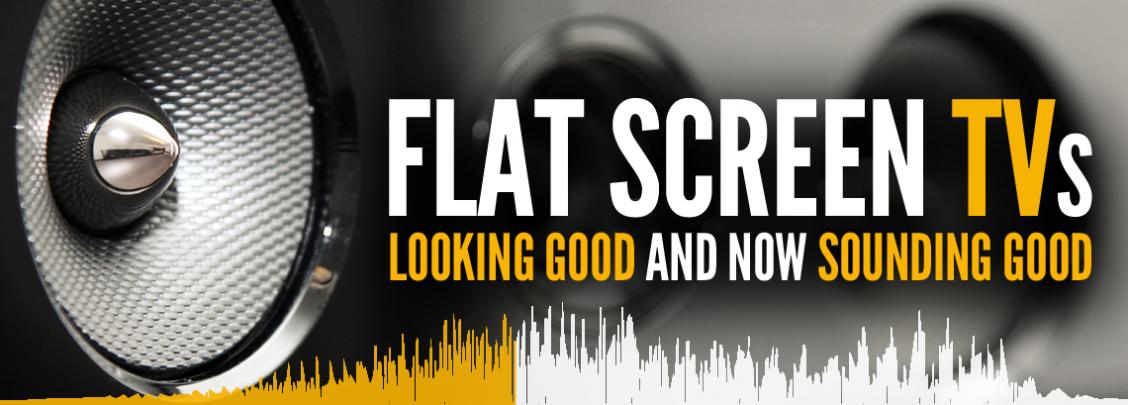Flat screen TVs: looking good – and now sounding good
There are many wonderful things about flat screen TVs. But: that’s not to say that they can’t be improved – especially in the area of audio. Ideally, speaker drivers like some depth in which to operate – but with TV front-to-back measurements now only a couple of centimetres in many cases that depth just isn’t available, and audio quality is often inevitably compromised.
What to do? First, it must be said that some manufacturers have applied typical innovation to deliver very acceptable sound from the TV itself. However, if you’re watching a movie, for example, the visual experience is unquestionably enhanced by better audio that brings the soundtrack alive, and gives real depth to the sound of explosions and so on.
Historically, you might have rigged up your TV with an amplifier and a decent pair of speakers. Now we have the soundbar – which pretty much does what it says on the tin. It’s a bar with speakers in it that would typically sit under your TV (although they can also be wall mounted).
Improved bass response
What you’ll notice first and foremost is how the bass response (the primary victim of lack of TV cabinet depth) is substantially improved – and that’s especially the case if you choose a soundbar with a separate subwoofer (which can often be connected wirelessly, minimising cable clutter). Even dialogue in dramas – or the news – sounds better, clearer.
As with so many things, you mostly get what you pay for with soundbars (although there are some remarkable bargains to be had). The big question is whether you really have £1,000 ears – or £200 ears. You do tend to get more flexible connectivity (such as Bluetooth) on more expensive systems – and also features like the ability to use your TV remote to control the soundbar (which would normally come with its own remote).
Now, though, new technologies are transforming what’s possible with TV sound. First, we had stereo, such that sound came distinctly from the left or right. Then, we moved through 3:1, 5:1 and 7:1 (check out the YAMAHA YAS-105B for 7.1 Channel surround sound) so that the sound stage became increasingly accurate in terms of where sound seemed to be coming from.
The buzz
Today, the buzz is all about Dolby Atmos and its competitors DTS:X and Auro 3D. These new “object-based audio” technologies – developed for multichannel movie soundtracks (Batman vs Superman, The Revenant, and Star Wars: The Force Awakens all used Dolby Atmos) - take sound depth and realism to new levels that deliver an even more immersive experience because it is more 3-dimensional (sound can also appear to come from ‘up’ or ‘down’ as well as left and right) than a discrete speaker set-up.
A cinema capable of delivering Dolby Atmos sound could be equipped with anything up to the 64 speakers that the technology supports – but don’t worry… For the home, you can convert an existing speaker set-up – or you can get Atmos-enabled soundbars that include upward-firing speakers like the SAMSUNG HW-K950 SOUNDBAR. Either way, you’ll experience real 3D sound which, literally, has to be heard to be believed.
